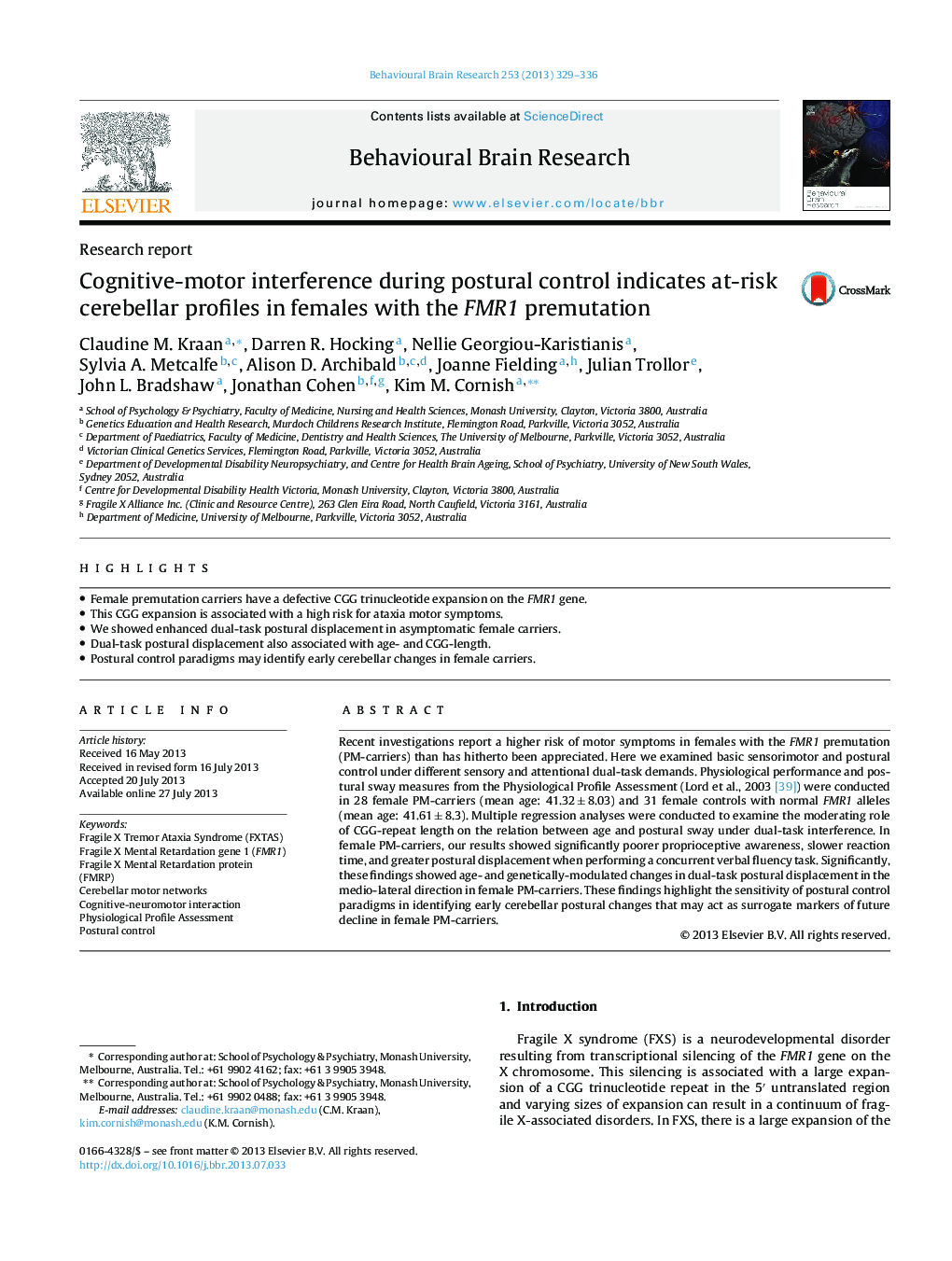| Article ID | Journal | Published Year | Pages | File Type |
|---|---|---|---|---|
| 6258710 | Behavioural Brain Research | 2013 | 8 Pages |
â¢Female premutation carriers have a defective CGG trinucleotide expansion on the FMR1 gene.â¢This CGG expansion is associated with a high risk for ataxia motor symptoms.â¢We showed enhanced dual-task postural displacement in asymptomatic female carriers.â¢Dual-task postural displacement also associated with age- and CGG-length.â¢Postural control paradigms may identify early cerebellar changes in female carriers.
Recent investigations report a higher risk of motor symptoms in females with the FMR1 premutation (PM-carriers) than has hitherto been appreciated. Here we examined basic sensorimotor and postural control under different sensory and attentional dual-task demands. Physiological performance and postural sway measures from the Physiological Profile Assessment (Lord et al., 2003 [39]) were conducted in 28 female PM-carriers (mean age: 41.32 ± 8.03) and 31 female controls with normal FMR1 alleles (mean age: 41.61 ± 8.3). Multiple regression analyses were conducted to examine the moderating role of CGG-repeat length on the relation between age and postural sway under dual-task interference. In female PM-carriers, our results showed significantly poorer proprioceptive awareness, slower reaction time, and greater postural displacement when performing a concurrent verbal fluency task. Significantly, these findings showed age- and genetically-modulated changes in dual-task postural displacement in the medio-lateral direction in female PM-carriers. These findings highlight the sensitivity of postural control paradigms in identifying early cerebellar postural changes that may act as surrogate markers of future decline in female PM-carriers.
